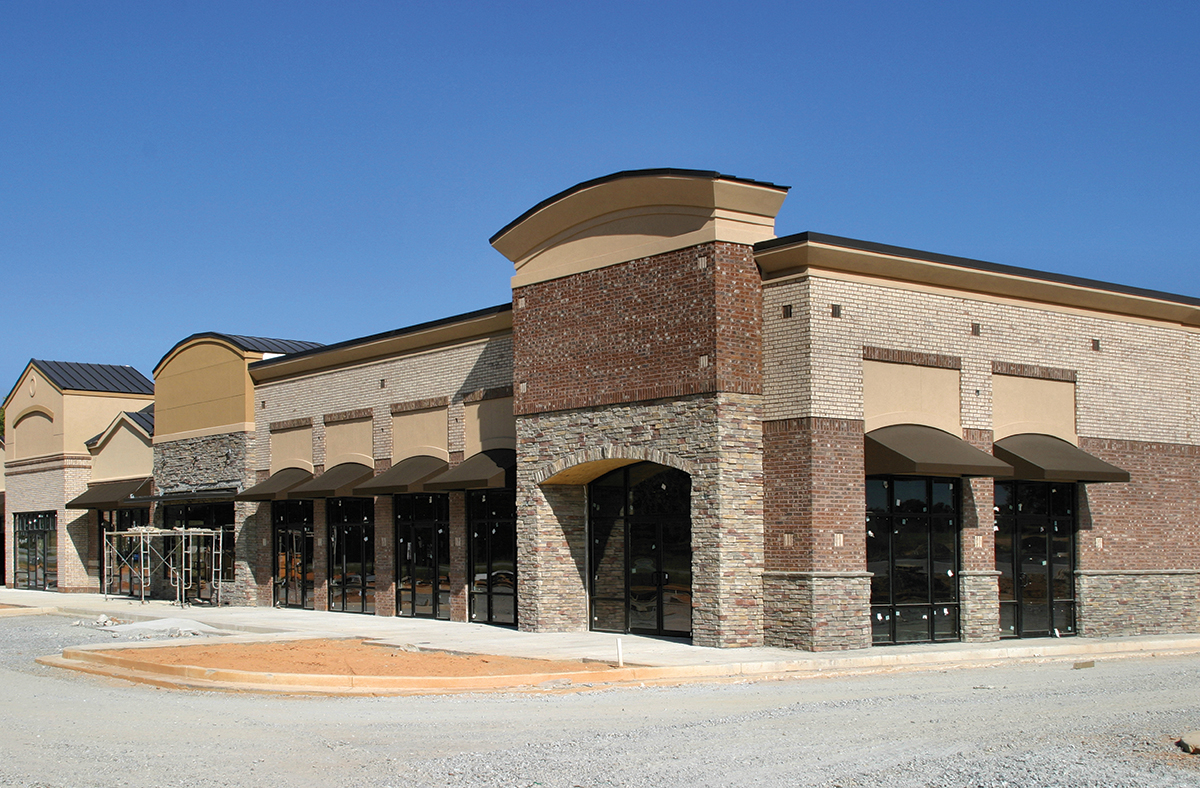

In the past, commercial real estate investors made their plans based on long-term forecasts rather than short-term predictions. The COVID-19 pandemic has upended much of this conventional wisdom, making predictions about markets and property sectors going forward difficult, if not impossible. The result has been the necessity of making decisions using data and information that is highly speculative. Some investors will see big wins, and many more will see at least modest losses.
While experienced investors and real estate bankers have been forced to plan under pressure before, the pandemic represents new and unknown challenges. Every market has its risks and rewards, and the current market is no exception. No one has a crystal ball to determine what the market will look like in one year, five years or 10 years.
Following is a look at this year’s market’s likely hazards and benefits. We’ll look at which industry segments are growing, which are holding their own and which are struggling.
Retail
Prior to the beginning of the pandemic, the retail sector was already unsteady. Thanks to the challenges associated with infection control, retail is now having to juggle additional issues, such as limited rent collection from closed shops. Combined with existing long-term issues, the retail industry is more unsettled than ever and is likely to remain so into next year.
Forecasts made early this year predicted that retail was going to be able to overcome COVID challenges. E-commerce was then still seen as a competitor, but 2020 has seen retail interests increasingly moving their business largely online to stay in the black. The need for essentials like groceries and home products has translated to high demand for some businesses; however, shopping centers that are organized around large grocery stores have seen an attrition of smaller side shops.
One of the biggest retail concerns is the shopping mall. There is no question that mall business has been decimated, particularly with the bankruptcy of large retail interests such as J. Crew, Neiman Marcus and JCPenney, which generally provided the anchor for malls and their ancillary shops, many of which have closed. Post-pandemic, it will be necessary to reinvent the mall, particularly as consumers have gotten out of the habit of mall shopping.
From an investor frame of reference, the biggest immediate challenge is rent collection, particularly for owners of buildings with a single tenant that may be in arrears on rent. Secondary disruptions, which are dependent on controlling COVID, will depend on unknowns such as how many people can be in a store or restaurant at one time, a variable that is different from state to state and county to county. Even if shopping and dining are allowed, many consumers may stay away and choose not to take the risk of indoor activities.
Recently, some analysts have noted that the pandemic has accelerated what is known as the “Amazon effect,” which means that more people will cultivate online shopping habits for more products going forward. While retail has always been a high-risk sector, some aspects will see a bigger depression in sales and a more unsteady recovery. Look for essential stores to come out of the pandemic in reasonably good shape, while malls and non-essential stores to see a shakier path back to normal. For investors in these non-essential and mall properties, it may not be a great time to consider selling now when losses could be significant.
Industrial
While the industrial sector hasn’t been unscathed, investors have reported they still have a lot of confidence in it, and there continues to be a healthy demand in leasing for industrial purposes. The time it takes to develop warehouse projects that feature 500,000 or more square feet can be up to 24 months, so the far-reaching nature of the projects – particularly with successful vaccine candidates on the horizon – means that development will likely continue as usual.
In some cases, rent collection rates for big box warehouses have remained at nearly 100 percent during the pandemic-related shutdowns. For multi-tenant industrial properties, however, the picture is less rosy, with rent collections down between 60 and 80 percent, particularly among small business tenants. Whether these businesses survive the pandemic remains to be seen and will depend on their line of business and what type of financial shape the companies were in before the shutdowns. It will also depend on future assistance from federal or state pandemic-relief programs.
Global commercial real estate services provider Newmark has noted that the industrial sector varies significantly depending on where companies’ assets are located. States with stricter moratoriums that prevent business as usual are likely to see more interruptions.
“The full extent of the COVID-19 outbreak’s effects on industrial development have yet to be realized, but there likely will be fewer projects moving forward in the near term, notwithstanding the fact that the industrial sector is best positioned for success during the economic downturn due to the ramp-up in e-commerce,” according to Newmark.
Office/Commercial
The coronavirus remote work experiment is emerging as a permanent trend, but at some point, employees will return to the office in numbers that match those of the past. While no one is certain when the workforce will return to pre-COVID numbers in terms of working in-person in offices, it has been forecast to be several years in the future. Some industries may see sectors of their workforces remaining virtual and home-based indefinitely.
Cushman & Wakefield, one of the largest real estate services firms in the world, has predicted that global office vacancies will not return to their pre-COVID peak levels until 2025. For the study, Cushman & Wakefield surveyed some of largest companies around the world about the future of office working, and attempted to measure both the cyclical impacts of the COVID recession and structural impacts assuming a higher increase in work from home.
“Globally, office leasing fundamentals will be significantly damaged in the near-term,” according to the company’s report on global real estate trends. “The COVID-19 recession and structural impacts will result in 95.8 million square feet (msf) of negative net absorption between 2020 Q2 and 2021 Q3 worldwide. This impact is greater than that of the Great Financial Crisis (GFC) when 85 million square feet of negative absorption occurred.”
The study forecast that global office vacancy will rise from 10.9 percent pre-COVID crisis to 15.6 percent by the second quarter of 2022. The report noted that the contrast is likely to be starker in western nations. During the GFC, Canada, Europe and the U.S. recorded a combined 120.5 million square feet of absorption peak-to-trough. The company’s forecast for these regions, including 2020 Q2 figures, is 211.7 million square feet of negative absorption peak-to-trough.
Kevin Thorpe, chief economist and global head of research for Cushman & Wakefield, told CNBC that the impacts from the global COVID-19 crisis will be significant, but the global office leasing sector will recover “largely due to employment growth.”
Over time, as the economy shifts to a knowledge-based, professional services economy, it will offset the flexible workforce trend, Cushman & Wakefield’s study concluded. “But in the near-term, there will be significant challenges for the office sector,” Thorpe said.
In the meantime, the work-from-home trend will continue to expand. A June S&P Global survey found that 67 percent of IT decision-makers expect remote policies to stay in place either long-term or permanently, which represents a substantial increase from the 38 percent who said the same at the beginning of the COVID-19 pandemic.
Companies may not be in a hurry to get all their workers back in the office, primarily because of the economic benefits they’re experiencing. A study by Global Workplace Analytics estimated that a typical employer can save an average of $11,000 per half-time telecommuter per year. The primary savings are the result of increased productivity, lower real estate costs, reduced absenteeism and turnover, and better disaster preparedness.
Cost savings could also come from lower salaries: about 62 percent of American workers indicated that they would be willing to take a pay cut to be able to work remotely.
Going forward, how quickly employees return to the office will depend on how safe they feel in doing so. An Edelman Trust Barometer special report entitled, “Workplace Trust and the Coronavirus” found that only half of employees believe that office spaces are safe. Employees told Edelman that they place the least amount of confidence in CEOs and senior managers to lead on return to work (only 14 percent).
In the interim, some companies are taking advantage of office space bargains in large cities. Facebook, for example, signed a major lease agreement in late 2020 for the old James A. Farley post office building in New York City. Amazon has also expanded its footprint in New York with the more than $1 billion purchase of the Lord & Taylor building on Fifth Avenue, which includes over 600,000 square feet of space.
Politics
The change in the presidency from a Trump administration to a Biden administration is likely to result in a number of near-term and long-term changes. One of the most urgent changes is likely to be in response to the COVID-19 pandemic, which was raging out of control at the conclusion of 2020.
With many states reporting massive surges in cases, the so-called second wave has not only arrived but shows no signs of slowing down. Biden has framed his campaign around putting a stop to the outbreak. To that end, he may seek to institute a national mask mandate, as many other countries have done.
While the move may be politically unpopular among some Americans, compelling Americans to wear masks in public could present a significant boost to the economy by helping more businesses keep their doors open. Such a mandate could be very good news for real estate investors if it helps control the spread of illness. Without a widespread mask mandate, real estate vacancy rates will continue to rise sharply.
Different economic policies from one administration to the next could also have a significant impact on real estate outcomes. Recently, real estate investors have been able to count on several tax breaks, one of which is the 1031 exchange, a loophole that allows investors to unload one piece of real estate for another without paying capital gains taxes on the sale. 1031 exchanges have been estimated to account for as much as 20 percent of all commercial real estate deals across the country. President Biden, however, has spoken of eliminating the 1031 exchange, which could lead to real estate investors seeing their tax burdens rise.
As with many industries, the sagest advice for investors might be “hurry up and wait.” Political winds are changing, and no one is certain yet which direction they’re blowing. Most analysts advise investors not to panic, since the Biden administration won’t operate in a bubble, according to The Motley Fool.
“He’ll still need the support of Senate lawmakers to institute tax code changes, so it may be quite some time until his proposals actually come to light — if they happen at all,” wrote The Fool’s Maurie Backman. “As such, real estate investors should keep Biden’s proposals in mind, but shouldn’t necessarily celebrate them, or panic, just yet.” T&ID

